Context
When Italy invaded Greece in October 1940, the island of Crete immediately became a safe harbour for the British Royal Navy and a base for the Royal Air Force. By the end of the year, the Italians had observed an increased British naval presence in Souda Bay (northwest of Crete). In December, Supermarina issued directives aimed at launching an attack against British ships in the bay, utilizing the M.T.M. of the X° M.A.S. flotilla. Given the weak military presence in the Eastern Mediterranean (a handful of destroyers and aircraft based in the Dodecannese islands), an attack with the explosive motorboats of the X° M.A.S. was seen as the most effective and efficient way to deal a blow to the enemy in the area.
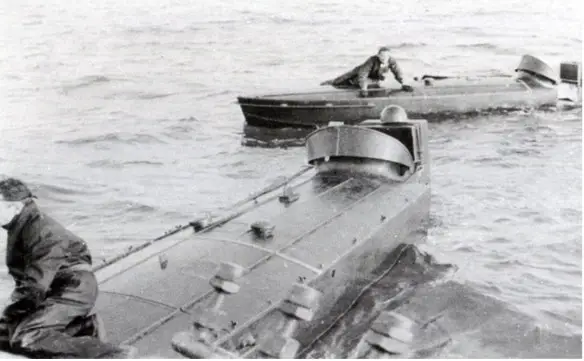
The explosive motorboats used by the X. MA.S.
Preparations
On the 24th of December 1940, the destroyers Strale and Dardo left the Sicilian port of Augusta, carrying four M.T.M. each, their destination was the Italian controlled island of Leros in the Aegean. The time window chosen for the attack was the last week of January 1941 but the adverse weather conditions and organizational problems delayed the action. It was only in the last week of March that all the conditions to launch a successful attack materialized. Italian air reconnaissance reported the presence at Souda of the heavy cruiser York, the light cruisers Glouchester and Calcutta, the destroyer Hasty, the tankers Desmoulea, Marie Maersk, Pericles and the support ships Cherryleaf and Doumana. With sea and weather conditions in favour, the military command of the Aegean chose the night between the 25th and 26th of March for the attack. Six M.T.M. were loaded on the destroyers Francesco Crispi and Quintino Sella which departed from the island of Stampalia in the afternoon of the 25th and approached Crete under the cover of darkness.
The attack
At 23:41 the destroyers released the six little M.T.M and sailed back to the Dodecannese. Commander Luigi Faggioni led the small group of raiders, comprising also Lt. Angelo Cabrini, chief mechanics Alessio DeVito, Tullio Tedeschi, Lino Beccati and sergent-gunner Emilio Barbieri.
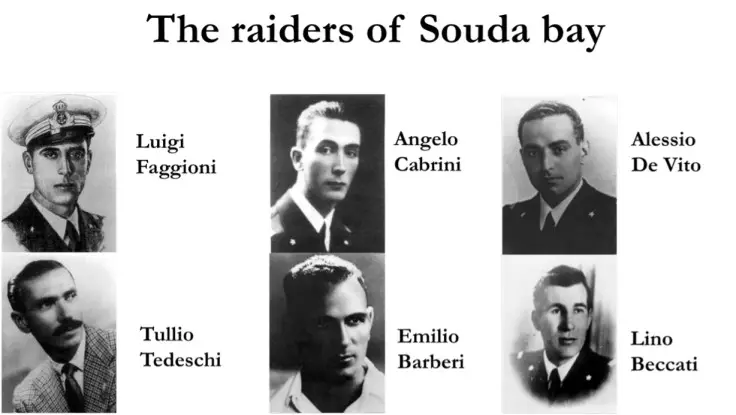
The small group arrived at Souda and passed north of the small island guarding the entrance of the bay and soon they faced the first obstructions. However, the small size of the M.T.M and their reduced daft meant that the first barrage could be easily surpassed. The second obstruction was surpassed as well and there were no signs of alarm among the defenders of the bay. Around 3.00 AM the group reached the centre of the bay and pushed forward until they met the third line of obstructions.
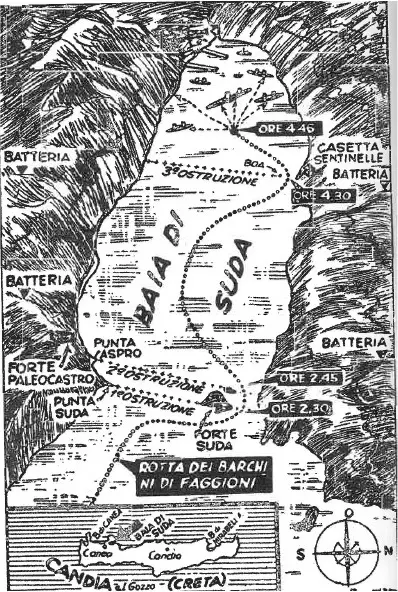 Faggioni searched for an entrance or a gap in the line and found it close to the northern coast. At 4:45 AM they reached their attack point, a few hundred meters from the enemy anchorage and waited for a while to get better visibility on their targets since dawn was expected around 05:18. Faggioni scouted around, studying the targets with his binoculars and then regrouped with the other. He gave the following orders to his men: Tedeschi and Cabrini had to attack the HMS York, Beccati the tanker Pericles while De Vito and Barberi the other two smaller ships in sight (probably a destroyer and another tanker). Faggioni remained in reserve, observing the attack and ready to launch his own M.T.M. if some of his men had missed the target. At 5:30 Faggioni’s men raced their little boats against the targets in rapid succession. Cabrini and Tedeschi successfully hit the York while Beccati hit the Pericles. De Vito and Barberi missed their targets while Faggioni sighted at the very last moment the cruiser HMS Coventry moving slowly towards the exit, he attacked the Coventry but missed. The explosions below the York and the Pericles immediately alarmed the defenders, who believed to be attacked from the air and soon opened fire with the AA guns towards the sky. In the subsequent hours, the six Italians were caught by the British either in the water or ashore and interrogated. None of them revealed any information other than name and rank. One of the M.T.M. that had missed the targets was found un-exploded on the coast but blew up before the British could inspect it in detail.
Faggioni searched for an entrance or a gap in the line and found it close to the northern coast. At 4:45 AM they reached their attack point, a few hundred meters from the enemy anchorage and waited for a while to get better visibility on their targets since dawn was expected around 05:18. Faggioni scouted around, studying the targets with his binoculars and then regrouped with the other. He gave the following orders to his men: Tedeschi and Cabrini had to attack the HMS York, Beccati the tanker Pericles while De Vito and Barberi the other two smaller ships in sight (probably a destroyer and another tanker). Faggioni remained in reserve, observing the attack and ready to launch his own M.T.M. if some of his men had missed the target. At 5:30 Faggioni’s men raced their little boats against the targets in rapid succession. Cabrini and Tedeschi successfully hit the York while Beccati hit the Pericles. De Vito and Barberi missed their targets while Faggioni sighted at the very last moment the cruiser HMS Coventry moving slowly towards the exit, he attacked the Coventry but missed. The explosions below the York and the Pericles immediately alarmed the defenders, who believed to be attacked from the air and soon opened fire with the AA guns towards the sky. In the subsequent hours, the six Italians were caught by the British either in the water or ashore and interrogated. None of them revealed any information other than name and rank. One of the M.T.M. that had missed the targets was found un-exploded on the coast but blew up before the British could inspect it in detail.
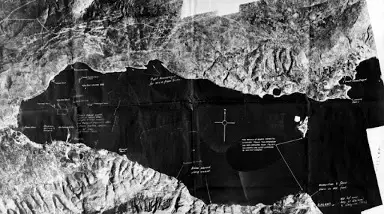
Aerial view of Souda bay
Epilogue
The HMS York suffered heavy damages from the explosive charges of the M.T.M., in the next months was also hit by Luftwaffe air attacks. When the Axis occupied Crete, it was found semi sunk and disabled in the bay. The tanker Pericles was raised and towed to Alexandria, but the damages suffered at Souda caused the sinking of the ship while in transfer. The attack at Souda bay was the first success of the X. M.A.S., after 9 months of failure and losses, the special weapons of the Regia Marina were finally proving their effectiveness.
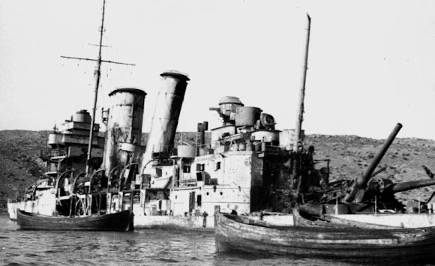
The HMS York semi sunk in Souda bay
Sources
Bagnasco, E. (2015). I mezzi d’assalto Italiani 1940-1945 (Parte I).
Giorgerini, G. (2007). Attacco dal mare, storia dei mezzi d’assalto della marina italiana.
Toschi, E. (2009 ). La mia avventura con Teseo Tesei.
